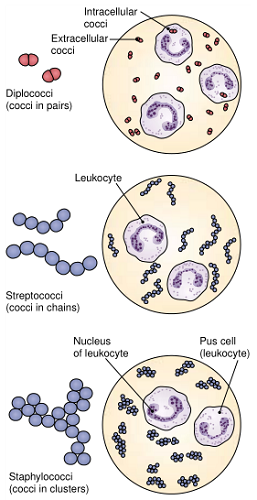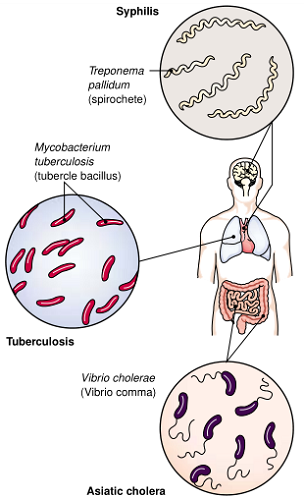- 签证留学 |
- 笔译 |
- 口译
- 求职 |
- 日/韩语 |
- 德语
Infectious diseases are caused by viruses, bacteria, fungi (yeasts and molds), protozoa (single-celled animals), and worms. In shape, bacteria may be round (cocci, Fig. 1), rod-shaped (bacilli, Fig. 2), or curved (vibrios and spirochetes, see Fig. 2). They may be named according to their shape and by the arrangements they form (see Fig. 1). They also are described according to the dyes they take up when stained in the laboratory. The most common laboratory bacterial stain is the Gram stain, with which gram-positive organisms stain purple and gram-negative organisms stain red (see Fig. 1). Microorganisms often produce disease by means of the toxins (poisons) they release. The presence of harmful microorganisms or their toxins in the body is termed sepsis.

FIGURE 1. Round bacteria (cocci), Gram stained. (Reprinted with permission from Cohen BJ, Wood DL. Memmler's The Human Body in Health and Disease. 9th Ed. Philadelphia: Lippincott Williams & Wilkins, 2000.)

FIGURE 2. Rod-shaped and curved bacteria. (Reprinted with permission from Cohen BJ, Wood DL. Memmler's The Human Body in Health and Disease. 9th Ed. Philadelphia: Lippincott Williams & Wilkins, 2000.)
责任编辑:admin
